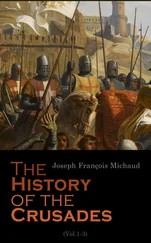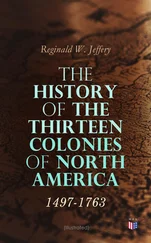Bishop Scott, of the General Conference of the Methodist Episcopal Church, was, by order of his Conference, sent on an official visit to Liberia. He spent more than two months among the missions, and returned in 1853 much gratified with the results garnered in that distant field.
"The government of the republic of Liberia, which is formed on the model of our own, and is wholly in the hands of colored men, seems to be exceedingly well administered. I never saw so orderly a people. I saw but one intoxicated colonist while in the country, and I heard not one profane word. The sabbath is kept with singular strictness, and the churches crowded with attentive and orderly worshippers." 108
The above is certainly re-assuring, and had its due influence among Christian people at the time it appeared. At an anniversary meeting of the Methodist Church, held in Cincinnati, O., in the same year, 1853, Bishop Ames gave utterance to sentiments in regard to the character of the government of Liberia that quite shocked some pro-slavery people who held " hired pews " in the Methodist Church. His utterances were as brave as they were complimentary.
"Nations reared under religious and political restraint are not capable of self-government, while those who enjoy only partially these advantages have set an example of such capability. We have in illustration of this a well-authenticated historical fact: we refer to the colored people of this country, who, though they have grown up under the most unfavorable circumstances, were enabled to succeed in establishing a sound republican government in Africa. They have given the most clear and indubitable evidence of their capability of self-government, and in this respect have shown a higher grade of manhood than the polished Frenchman himself." 109
The Presbyterian Board of Missions sent Rev. J.B. Pinny into the field in 1833. In 1837, missions were established among the natives, and were blessed with very good results. In 1850 there were, under the management of this denomination, three congregations, with 116 members, two ordained ministers, and a flourishing sabbath school. A high-school was brought into existence in 1852, with a white gentleman, the Rev D.A. Wilson, as its principal. It was afterward raised into a college, and was always crowded.
The American Protestant-Episcopal Church raised its missionary standard in Liberia in 1836. The Rev John Payne was at the head of this enterprise, assisted by six other clergymen, until 1850, when he was consecrated missionary bishop for Africa. He was a white gentleman of marked piety, rare scholarship, and large executive ability. The station at Monrovia was under the care of the Rev. Alexander Crummell, an educated and eloquent preacher of the Negro race. There was an excellent training-school for religious and secular teachers; there are several boarding-schools for natives, with an average attendance of a hundred; and up to 1850 more than a thousand persons had been brought into fellowship with this church.
The Foreign Missionary Board of the Southern Baptist Convention in 1845 turned its attention to this fruitful field. In 1855, ten years after they began work, they had 19 religious and secular teachers, 11 day-schools, 400 pupils, and 484 members in their churches. There were 13 mission-stations, and all the teachers were colored men.
We have said, a few pages back in this chapter, that the Methodist Church was first on the field when the colony of Liberia was founded. We should have said one of the first; because we find, in "Gammell's History of the American Baptist Missions," that the Baptists were in this colony as missionaries in 1822, that under the direction of the Revs. Lot Carey and Collin Teage, two intelligent Colored Baptists, a church was founded. Mr. Carey was a man of most exemplary character. He had received an education in Virginia, where he had resided as a freeman for some years, having purchased his freedom by his personal efforts, and where also he was ordained in 1821.
"In September, 1826, he was unanimously elected vice-agent of the colony; and on the return of Mr. Ashmun to the United States, in 1828, he was appointed to discharge the duties of governor in the interim—a task which he performed during the brief remnant of his life with wisdom, and with credit to himself. His death took place in a manner that was fearfully sudden and extraordinary. The natives of the country had committed depredations upon the property of the colony, and were threatening general hostilities. Mr. Carey, in his capacity as acting governor, immediately called out the military forces of the colony, and commenced vigorous measures for repelling the assault and protecting the settlements. He was at the magazine, engaged in superintending the making of cartridges, when by the oversetting of a lamp, a large mass of powder became ignited, and produced and explosion which resulted in the death of Mr. Carey, and seven others who were engaged with him. In this sudden and awful manner perished and extraordinary man—one who in a higher sphere might have developed many of the noblest energies of character and who, even in the humble capacity of a missionary among his own benighted brethren, deserves a prominent place in the list of those who have shed lustre upon the African race.
"At the period of Mr. Carey's death, the church of which he was the pastor contained a hundred members, and was in a highly flourishing condition. It was committed to the charge of Collin Teage, who now returned from Sierra Leone, and of Mr. Waring, one of its members, who had lately been ordained a minister. The influences which had commenced with the indefatigable founder of the mission continued to be felt long after he had ceased to live. The church an Monrovia was increased to two hundred member; and the power of the gospel was manifested in other settlements of the Colonization Society, and even among the rude natives of the coast, of whom nearly a hundred were converted to Christianity, and united with the several churches of the colony." 110
We regret that statistics on Liberia are not as full as desirable; but we have found enough to convince us that the cause of religion, education, and republican government are in safe hands, and on a sure foundation. There are now more than three thousand and eighteen hundred children, seven hundred of whom are natives; 111and in the day-schools are gathered about two thousand bright and promising pupils.
Many noble soldiers of the cross have fallen on this field, where a desperate battle has been waged between darkness and light, heathenism and religion, the wooden gods of men and the only true God who made heaven and earth. Many have been mortally touched by the poisonous breath of African fever, and, like the sainted Gilbert Haven, have staggered back to home and friends to die. Few of the white teachers have been able to remain on the field. During the first thirty years of missionary effort in the field, the mortality among the white missionaries was terrible. Up to 1850 the Episcopal Church had employed twenty white teachers, but only three of them were left. The rest died, or were driven home by the climate. Of nineteen missionaries sent out by the Presbyterian Church up to 1850, nine died, seven returned home, and but three remained. The Methodist Church sent out thirteen white teachers: six died, six returned home, and but one remained. Among the colored missionaries the mortality was reduced to a minimum. Out of thirty-one in the employ of the Methodist Church, only seven died natural deaths, and fourteen remained in the service. On this subject of mortality, Bishop Payne says—
"It is now very generally admitted, that Africa must be evangelized chiefly by her own children. It should be our object to prepare them, so far as we may, for their great work. And since colonists afford the most advanced material for raising up the needed instruments, it becomes us, in wise co-operation with Providence, to direct our efforts in the most judicious manner to them. To do this, the most important points should be occupied, to become in due time radiating centres of Christian influence to colonists and natives." 112
Читать дальше












